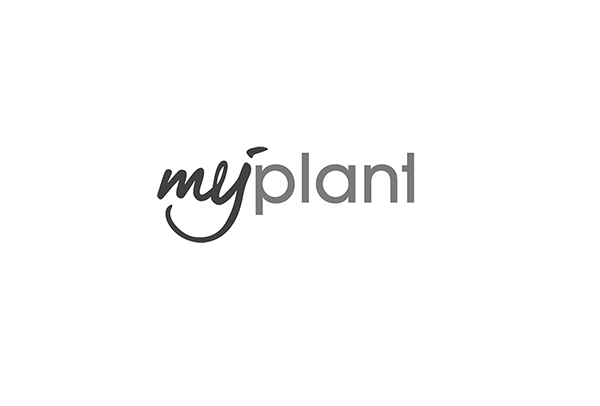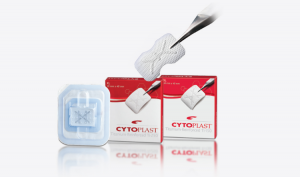Boosting bone management – Mark Croft myplant
Featured Products Promotional FeaturesPosted by: Dental Design 24th January 2020

 We all know that a patient’s bone quality can dictate the type of treatment they can receive. Indeed, poor quality bone or evidence of significant bone loss is likely to restrict patients’ options when it comes to dental implant placement.
We all know that a patient’s bone quality can dictate the type of treatment they can receive. Indeed, poor quality bone or evidence of significant bone loss is likely to restrict patients’ options when it comes to dental implant placement.
As such, looking at methods to increase the available bone volume and improve the quality of bone has fast become a necessity for implant dentists, especially those who are confident that they can help patients who have been turned away elsewhere. With correct bone management materials, implant placement is still a viable option for many patients – including those who present with more challenging bone quality.
A material choice
The first thing to consider when it comes to bone grafting is what sort of bone graft material to use. In recent years, the available array of materials has expanded exponentially, so it can be difficult to decide what type of product is likely to result in the most beneficial outcome.
The initial choice you need to make is whether to use particulate or a block – both have certain benefits and shortcomings. For example, there is some evidence to suggest that block graft material suffers less from resorption after placement, though there seems to be only a minor difference when compared to particulate.[i]Furthermore, it has been speculated that this advantage has a sting in its tail. The sheer size of a block graft can cause issues with the material properly integrating at the site, and this means that it is a less predictable procedure than when particulate is used.[ii]
There’s also the origin of the bone used to consider and how this can affect the procedure. It’s generally assumed that autogenous bone (derived from the patient) is the best option. This, of course, makes perfect sense as the body is likely to react best to the patient’s own biomechanisms and therefore not reject the graft as a foreign material in the body. There’s also some research to support the suggestion that autogenous bone, due to its better abilities to osseointegrate, minimises the threat of infection, bone breakdown and dislodgement.[iii]
However, the same research does discuss the possible downsides to autogenous bone grafts. These include the fact that taking a bone graft from the patient will require greater operative time, the bone site graft may experience morbidity and fail, and moulding challenges may occur as the bone is likely to be less malleable than premade particulates. Furthermore, there is always the issue that harvesting autogenous bone may not be an option due to limited availability.
Particulates these days are generally made from equine, porcine or bovine sources and can bring their own set of benefits. As these products are pre-prepared, they are often easier to sculpt and manoeuvre, and are all effective osteoconductive materials which support the formation of new bone. Regardless, the downsides of these materials are that typically they have shown higher levels of resorption, and some bovine products, in particular, have been documented to result in immune reactions and possible diseases such as spongiform encephalopathy.[iv]There are vegetable-derived alternatives made from algae for vegetarian or vegan patients – these seem to preform similarly to animal-derived products.
Beyond the bone
Of course, bone grafting and bone management involves so much more than simply the choice of bone grafting material used. It’s necessary to think about how to hold these materials in place, and here is where your choice of collagen membrane comes in.
Much like grafting materials, there are a huge array of collagen membranes available, so it’s important for professionals to know what traits to look for. One of the core traits to find is how easy to place and mould a collagen membrane is. Bone grafting requires precision, so finding a membrane that is malleable to your needs and which can be placed easily but still has rigidity enough to prevent defects is essential. It’s also a good idea to look into the tensile strength of all potential options. This will determine how easy it is to keep a membrane in place using sutures, pins, or whatever your preferred method is. A weak tensile strength means that these products may rip. Lastly, you must consider how long you want the membrane to last. Bone graft procedures can take a long time to heal, so it’s necessary that membranes can keep particulate/block grafts in place for the duration of this time to ensure proper osseointegration.

Cytoplast RTM collagen membranes from myplant are the ideal option for professionals looking to boost their bone management skills. Tensile without being too flimsy and able to last as long as you need them, they are a trusted choice for predictable bone management.
To find out more, visit www.myplant-dental.com, email order@myplant-dental.comor call 0049 21311 259465
References
[i]Dasmah, A., Thor, A., Ekestubbe, A., Sennerby, L., Rasmusson, L. Particulate vs. block bone grafts: three-dimensional changes in graft volume after reconstruction of the atrophic maxilla, a 2-year radiographic follow-up. J Craniomaxillofac Surg. 2012 Dec;40(8):654-9. doi: 10.1016/j.jcms.2011.10.032. Epub 2011 Dec 3.
[ii]Gultekin, B., Bedeloglu, E., Kose, T., Mijiritsky, E. Comparison of Bone Resorption Rates after Intraoral Block Bone and Guided Bone Regeneration Augmentation for the Reconstruction of Horizontally Deficient Maxillary Alveolar Ridges. Biomed Res Int. 2016; 2016: 4987437.
[iii]Rogers, G., Greene, A. Autogenous bone graft: basic science and clinical implications. J Craniofac Surg. 2012 Jan;23(1):323-7. doi: 10.1097/SCS.0b013e318241dcba.
[iv]Titsinides, S., Agrogiannis, G., Karatzas, T. Bone Grafting Materials in Dentoalveolar Reconstruction: A Comprehensive Review. Japanese Dental Science Review. 2019; 55 (1): 26 – 32.










